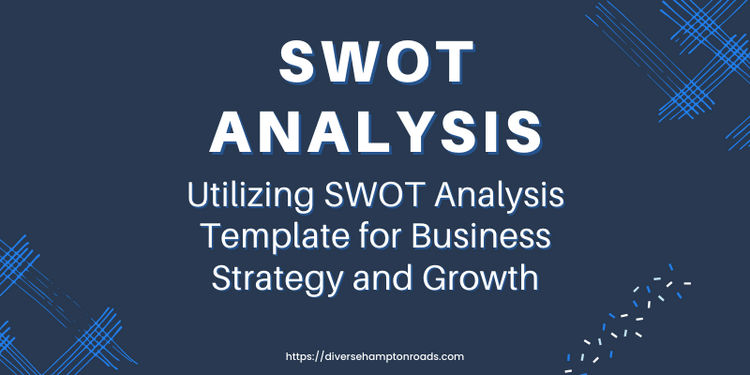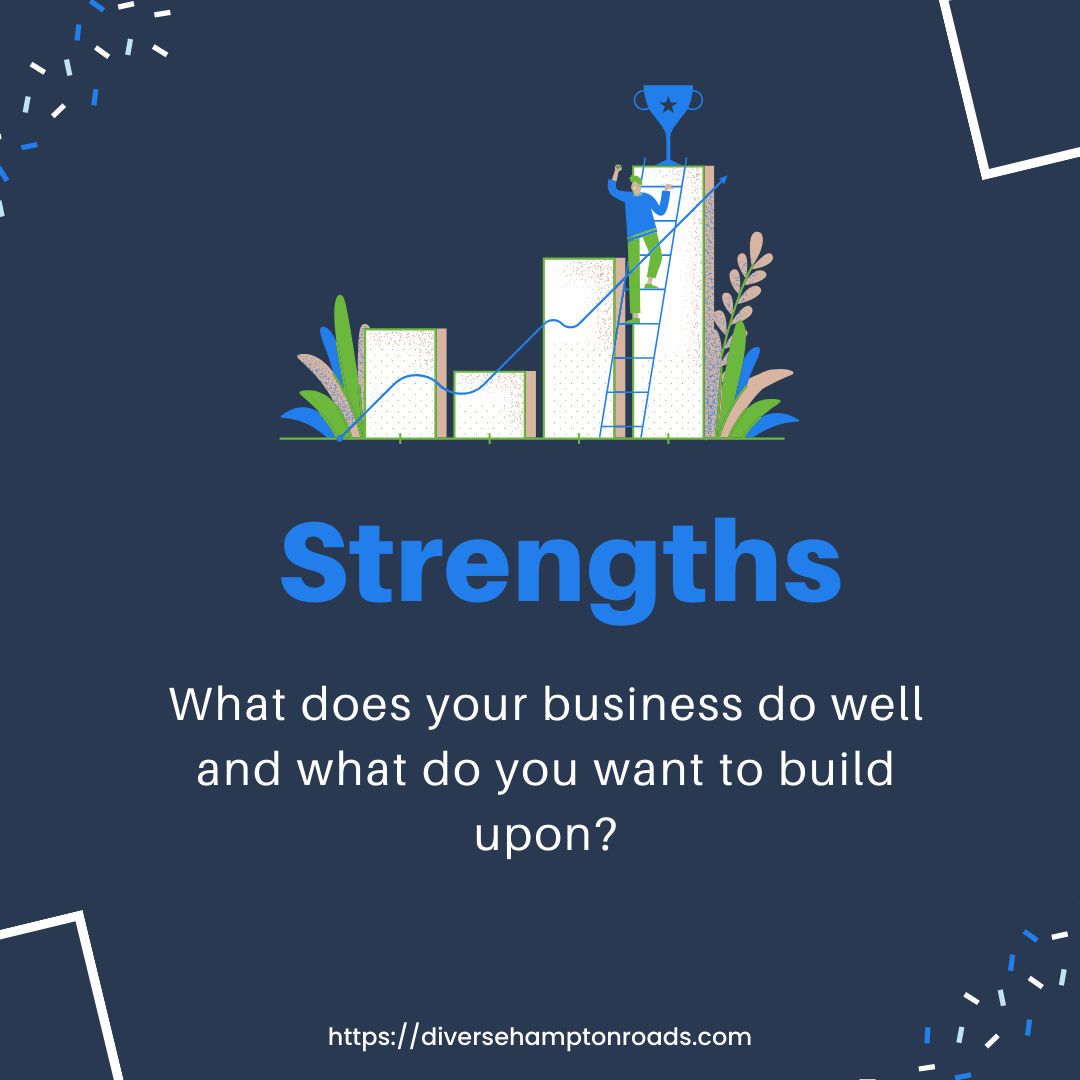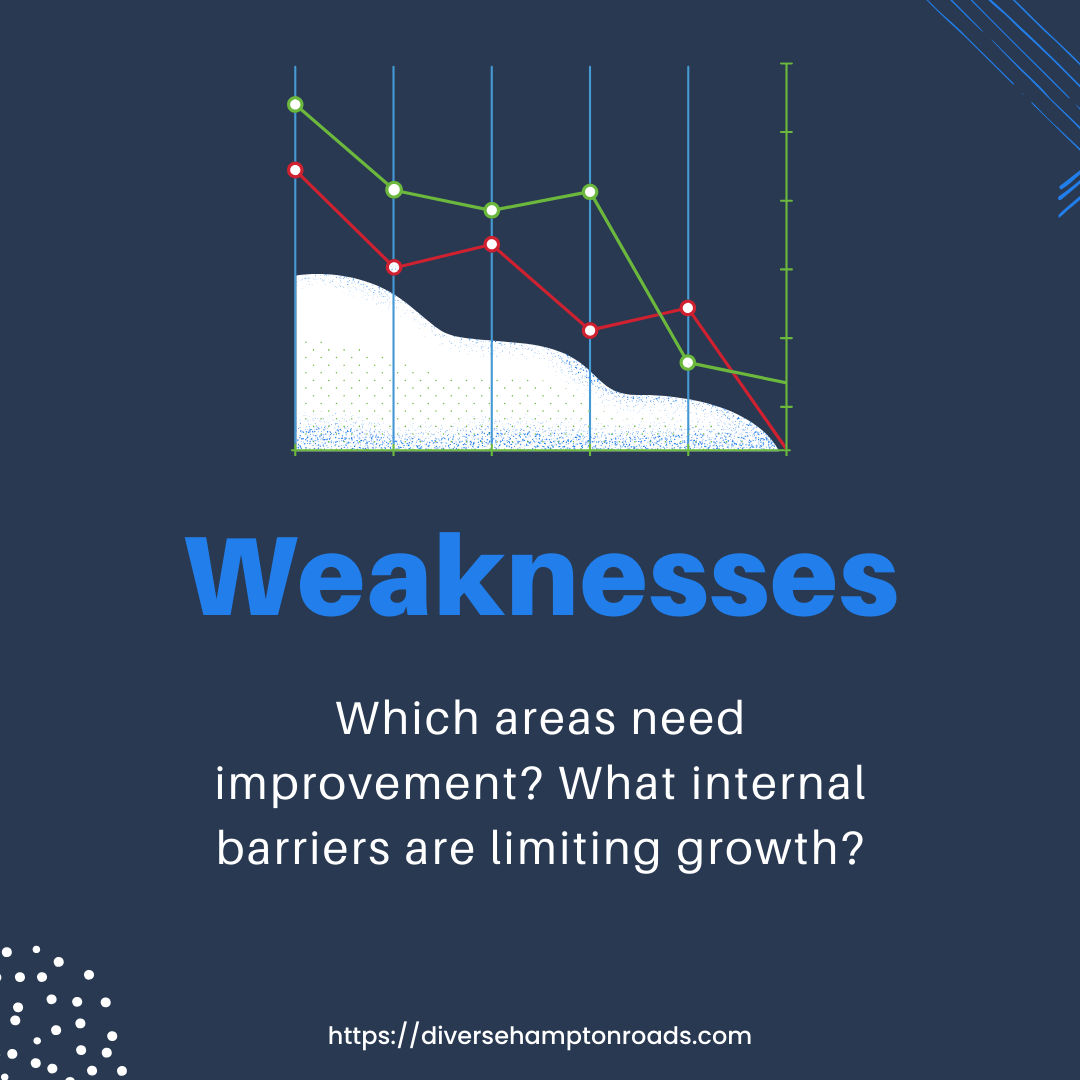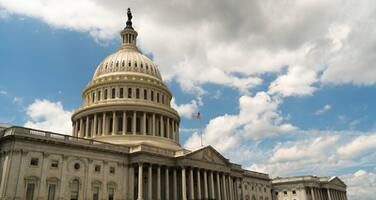
Unlock Business Insights with SWOT Analysis
If you're looking to gain strategic insights for your business, SWOT Analysis is the tool for you. By conducting a comprehensive SWOT Analysis, you can identify key strengths, weaknesses, opportunities, and threats that impact your business. This valuable information can be leveraged to make better-informed decisions and develop a robust and effective business strategy.
Key Takeaways
- SWOT Analysis is a powerful tool for businesses to analyze their environment and develop a strategic plan.
- It stands for Strengths, Weaknesses, Opportunities, and Threats.
- By analyzing these four elements, businesses can identify areas for improvement as well as capitalize on opportunities.
- Utilizing a SWOT Analysis template can streamline the process and ensure a thorough analysis is conducted.
- SWOT Analysis can be integrated into your business strategy to create a robust and effective plan.
What is SWOT Analysis?
SWOT Analysis is a powerful and versatile technique used to evaluate the internal and external factors that impact your business. The acronym stands for Strengths, Weaknesses, Opportunities, and Threats.
SWOT Analysis helps you gain a deeper understanding of your business environment and make better-informed decisions. By analyzing your strengths and weaknesses, you can identify areas in which your business excels and those that require improvement. By exploring opportunities, you can grow your business and stay ahead of the competition. By examining threats, you can proactively address potential risks and improve your chances of success.
SWOT Analysis is an essential tool for organizations of all sizes and stages, from startups to established businesses. By understanding the factors that impact your business, you can adjust your plans and strategies to ensure long-term success.
The Importance of SWOT Analysis
SWOT Analysis is a crucial tool for any business. By highlighting the strengths, weaknesses, opportunities, and threats present in the broader business environment, you can gain a better understanding of your business landscape.
SWOT Analysis helps identify strengths that can be capitalized upon, weaknesses that need improvement, and opportunities and threats that can help you stay ahead of market trends. It is an essential step towards developing a more effective business strategy.
Conducting a SWOT Analysis provides insightful information that enables you to make better-informed decisions. By taking a closer look at your strengths, you can focus on making them even stronger. By identifying weaknesses, you can develop strategies for improving them. Opportunities can uncover new and exciting avenues for expansion, while threats help you navigate and mitigate potential risks.
Overall, SWOT Analysis is an indispensable tool that empowers you to remain competitive, agile, and adaptable in an ever-changing business environment.
How to Conduct a SWOT Analysis
If you want to gain a deeper understanding of your business environment, conducting a comprehensive SWOT Analysis is essential. It involves several steps that this section will guide you through to ensure a thorough and insightful analysis of your business.
Step 1: Identify Internal Strengths and Weaknesses
The first step in conducting a SWOT Analysis is to identify your internal strengths and weaknesses. These are factors that are within your control, such as your company culture, financial resources, and marketing strategy. Consider what your business does well and where improvement is needed.
Step 2: Identify External Opportunities and Threats
The second step is to identify the external opportunities and threats that your business faces. These are factors that are outside of your control, such as new market trends, changing customer preferences, and increased competition. Identify potential opportunities for growth and threats that could harm your business.
Step 3: Analyze and Prioritize Factors
Once you have identified all the relevant factors, it's time to analyze and prioritize them. Consider which factors are most critical for your business success and which ones require immediate attention. Your analysis should help you establish a clear understanding of your business's current state and how it can grow.
Step 4: Develop a Strategic Plan
Using the insights gained from your SWOT Analysis, you can begin to develop a strategic plan that accounts for strengths, weaknesses, opportunities, and threats. The plan should address the critical areas to improve, how to capitalize on the opportunities, and how to minimize the impact of the identified threats.
Step 5: Regularly Review and Update
A SWOT Analysis is not a one-time exercise; it should be periodically reviewed and updated to reflect changes in the business environment. Review and update your SWOT Analysis regularly to ensure your business stays competitive and relevant.
The Elements of a SWOT Analysis
A SWOT analysis is crucial for the success of your business, and it comprises four essential elements. Let's explore each element in detail and understand how they contribute to comprehensive business analysis:

1. Strengths
This element includes analyzing the internal aspects of your company, such as unique selling propositions, innovative features, and positive attributes that give you a competitive advantage over your competitors.

2. Weaknesses
This element involves evaluating the areas that need improvement in your business, such as outdated technology, inefficient processes, weak brand recognition, and limited resources. By addressing these issues, you can strengthen your business and prepare for future challenges.

3. Opportunities
This element focuses on external factors that can benefit your business, such as emerging markets, industry trends, and untapped customer segments. Understanding opportunities can help you expand your business and unlock new revenue streams.

4. Threats
This element comprises external factors that can hinder your business growth and damage your reputation, such as new competitors, economic instability, changing industry regulations, and negative PR. Identifying threats can help you mitigate risks and take proactive steps to prepare for potential challenges.
By conducting a SWOT analysis and analyzing these elements, you can develop a robust business strategy that aligns with your goals and objectives.
Using a SWOT Analysis Template
If you're new to SWOT Analysis or looking to streamline the process, using a template can be extremely helpful. By doing so, you can ensure that all necessary aspects of your business are covered, from strengths and weaknesses to opportunities and threats.
That's why we're providing you with a free SWOT Analysis template to guide your analysis and help you make the most of this valuable tool. Simply download the template and start filling it out with your business's information. You can find and download the template here.
The template is designed to guide you through the process of conducting a comprehensive SWOT Analysis, ensuring nothing is overlooked. By doing so, you'll be able to gain valuable insights to guide your business's growth and success.
Case Study: Utilizing SWOT Analysis to Drive Business Success
Are you curious about how a SWOT Analysis can benefit your business? Here is an example of how a company utilized a SWOT Analysis to develop a strategic plan and achieve success.
The Company:
ABC Corporation is a startup tech company specializing in innovative software solutions. The company was struggling to gain market share and maintain profitability in a highly competitive industry.
The SWOT Analysis:
ABC Corporation recognized the need for strategic planning and conducted a SWOT Analysis to identify their strengths, weaknesses, opportunities, and threats. Through an internal survey and market research, they identified the following:
| Strengths | Innovative products, Strong technical expertise |
|---|---|
| Weaknesses | Understaffed, Limited marketing budget |
| Opportunities | Increase demand for software solutions, Unexplored market niches |
| Threats | Intense competition, Rapid technological changes |
The SWOT Analysis revealed that ABC Corporation had a strong product and expertise base, but was understaffed and allocated limited funds to their marketing efforts. However, they identified opportunities to increase demand for their product and explore new market niches. They also recognized the threat of intense competition and rapid technological changes in their industry.
The Strategic Plan:
Using the insights from the SWOT Analysis, ABC Corporation developed a strategic plan that focused on:
- Increasing staffing to address weaknesses in the company infrastructure
- Investing in marketing to increase brand awareness and reach new customers
- Diversifying their product line to explore untapped market niches
- Researching and developing new technologies to stay ahead of the competition
The implementation of this strategic plan has enabled ABC Corporation to increase its market share and generate substantial revenue growth. The insights gained from the SWOT Analysis allowed the company to make informed decisions and implement tailored strategies that address their unique challenges and opportunities.
Advantages and Disadvantages of SWOT Analysis
SWOT Analysis is a widely used strategic planning tool that has numerous benefits for businesses. By conducting a SWOT Analysis, you can identify strengths and weaknesses and evaluate opportunities and threats. However, despite its popularity, it is essential to be aware of the advantages and disadvantages of this tool.
SWOT Analysis Benefits
The advantages of SWOT Analysis are as follows:
- Provides a comprehensive understanding of your business: SWOT Analysis enables you to evaluate both internal and external factors that impact your business, giving you a comprehensive understanding of your business environment.
- Identifies strengths and weaknesses: By analyzing your internal factors, you can identify your strengths and weaknesses, which can help you in decision-making and setting goals.
- Evaluate opportunities and threats: SWOT Analysis allows you to assess opportunities that your business can capitalize on and threats that may hinder your business growth.
- Supports strategic decision-making: SWOT Analysis provides valuable insights that can support strategic decision-making for your business.
SWOT Analysis Disadvantages
The disadvantages of SWOT Analysis are as follows:
- Can be subjective: The outcome of a SWOT Analysis can vary depending on the input and interpretation of the person conducting the analysis, making it somewhat subjective.
- May overlook some factors: SWOT Analysis may overlook some critical factors that can impact your business environment, giving incomplete results.
- Can be time-consuming: Conducting a SWOT Analysis can be a time-consuming process, requiring considerable effort and resources.
- May require additional analysis: The results of a SWOT Analysis may require additional analysis or research to make strategic decisions.
Overall, SWOT Analysis has numerous advantages that enable businesses to make informed decisions, but it is essential to be aware of its limitations to reap its benefits fully.
SWOT Analysis vs. PEST Analysis
When it comes to analyzing your business, there are several techniques you can use. Two of the most popular methods are SWOT Analysis and PEST Analysis. While both tools focus on generating insights to inform strategic decision-making, they differ in their scope and application.
SWOT Analysis
SWOT Analysis, as we have explored earlier in this article, assesses the internal strengths and weaknesses of a business, as well as the external opportunities and threats presented by the broader market environment. By conducting a SWOT Analysis, you can gain insight into the factors that affect your business's potential for growth and success.
PEST Analysis
PEST Analysis, on the other hand, evaluates external factors that can impact a business, including political, economic, social, and technological influences. By analyzing these elements, businesses can identify trends and shifts in the broader environment and adjust their strategies accordingly.
When to Use Each Method
Both SWOT Analysis and PEST Analysis are valuable tools that serve different purposes. SWOT Analysis is effective for identifying internal factors that impact the business, while PEST Analysis is useful for evaluating external factors that are beyond the control of the business. When choosing which method to use, consider what insights you seek and whether the factors in question are internal or external.
How They Complement One Another
While SWOT Analysis and PEST Analysis serve different purposes, they can complement each other in providing a comprehensive picture of the business environment. By analyzing both internal and external factors, you can develop a more thorough understanding of your business's unique challenges and opportunities.
In conclusion, both SWOT Analysis and PEST Analysis offer valuable insights that can help you make informed business decisions. By choosing the appropriate method and conducting a thorough analysis, you can gain a deeper understanding of your business environment and develop a more effective strategy for success.
Incorporating SWOT Analysis into Your Business Strategy
If you want to create a robust and effective business strategy, incorporating SWOT Analysis into your strategic planning process is a must. This powerful tool will guide your decision-making process by helping you align your strengths, weaknesses, opportunities, and threats with your business goals.
To begin, review the findings of your SWOT Analysis and determine how you can apply them to your business strategy. Start by identifying your business's primary strengths and weaknesses and consider how you can leverage or address them in your strategic planning. Next, analyze your opportunities and threats and examine how you can overcome obstacles and capitalize on trends.
Incorporating SWOT Analysis into your business strategy will help you take a more data-driven approach, enabling you to make informed decisions that lead to long-term success. By considering the insights gained from your SWOT Analysis, you can develop a strategy that effectively navigates your business through your current environment and positions it for future growth.
Conclusion
SWOT Analysis is an essential tool for making informed business decisions. By analyzing your strengths, weaknesses, opportunities, and threats, you can develop a more effective strategy for growth and success. Remember to follow the SWOT Analysis process by identifying both internal and external factors and using the free SWOT Analysis template provided to guide your analysis.
As you move forward, keep in mind that SWOT Analysis is an ongoing process, and you should revisit it regularly to ensure your business strategy remains relevant and effective. With a comprehensive understanding of your business environment, you can confidently make informed decisions and take the necessary steps to achieve your goals.








.jpg)